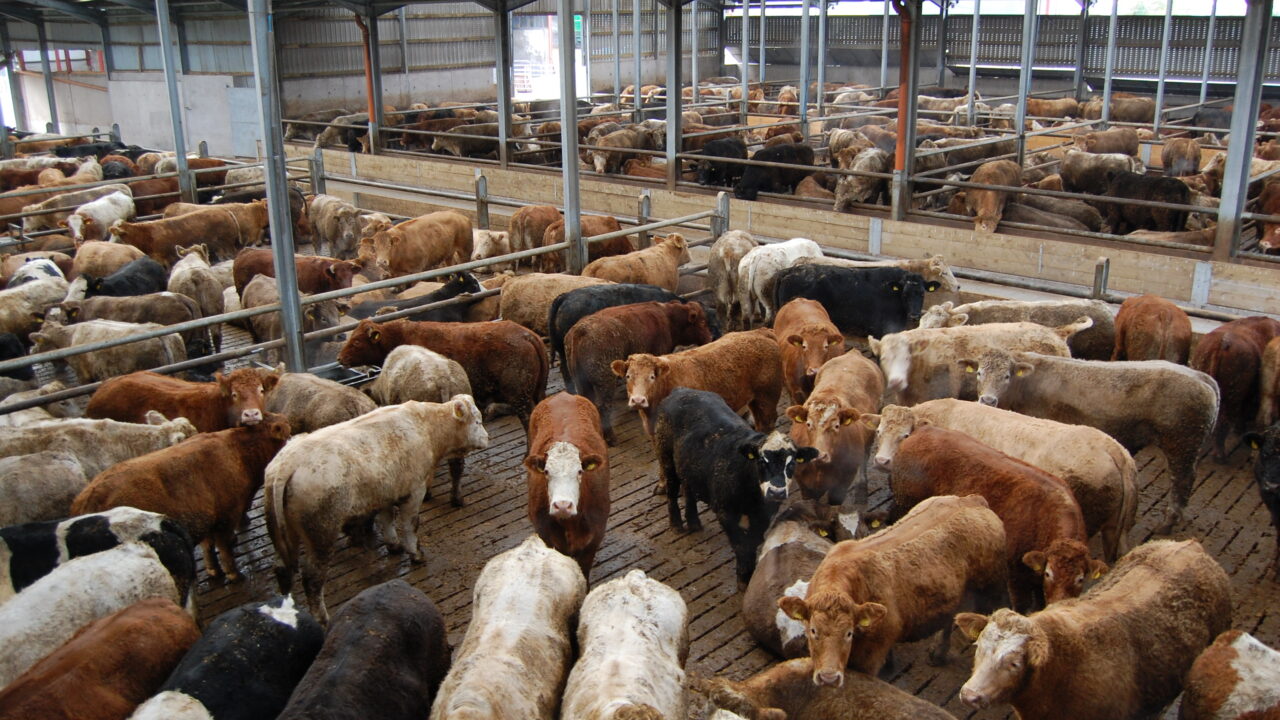Beef factory prices have remained relatively unchanged, with the majority of factories holding the base beef price at last week’s level.
However, a noticeable trend is starting to occur, with a number of procurement managers say that cull cow numbers are starting to increase on a week-by-week basis.
One said that farmers facing lower milk prices are taking this opportunity to cull the under productive cows from their herds.
Another added that there is ‘no shortage’ of dairy cows being brought forward for slaughter.
This could potentially ease some of the pressure of factory buyers, who have been struggling to secure stock numbers over the past couple of weeks.
But despite the increase in cull slaughter numbers, the prices being offered for cull cows remains on par with last week.
Farmers selling R grade cows are being offered 345c/kg, O grade cows are moving 310-325c/kg, while the plainer P grade diary types are making 310-315c/kg.
Grass cattle starting to appear on the market
Factory buyers have also indicated that grass cattle are starting to appear, which is also likely to take some of the pressure of buyers over the next couple of weeks.
Procurement managers, particularly in the south of the country have said that grass cattle have done ‘exceptionally well’ over the past two-to-three months and as a result some are coming forward for slaughter sooner than anticipated.
And as a result of the increased number of dairy cull and grass cattle slaughterings, most factories have maintained beef prices at last week’s level.
Farmers selling steers this week can expect to be quoted 400-405c/kg, while heifer finishers are being offered 410-415c/kg.
Beef Cattle supplies
According to the Department of Agriculture, there was a slight increase in the number of cattle slaughtered in Irish beef plants during the week ending May 30.
The majority of this jump comes on the the back of higher young bull slaughterings, which are 18% or 650 head higher than the week before.
Figures from the Department of Agriculture show that cow and aged bull slaughterings also increased during the week ending May 30.
However, the number of steers slaughtered during the week ending May 30 was relatively unchanged from the week before.
The steer kill increased by just 60 head, while heifer throughput declined by 5.6% or 445 head compared to the week ending May 23.
Main markets
According to Bord Bia, the British beef trade continues its upward momentum, on the back of tighter cattle supplies.
It also reports that the demand fro beef has increased on the back of improved weather and as a result British steers are now making the equivalent of around 433c/kg.
The French beef trade remains steady, it says, with large domestic supplies and German beef available on the market.
However deliveries have been disrupted due to the floods in France, while retail promotions continue to focus on domestically produced striploin steaks, loins and minced beef.
However, unlike Britain and France, there was little change in the Italian beef trade last week, but the R3 young bull price declined by 8c/kg to around 372c/kg, Bord Bia reports.
